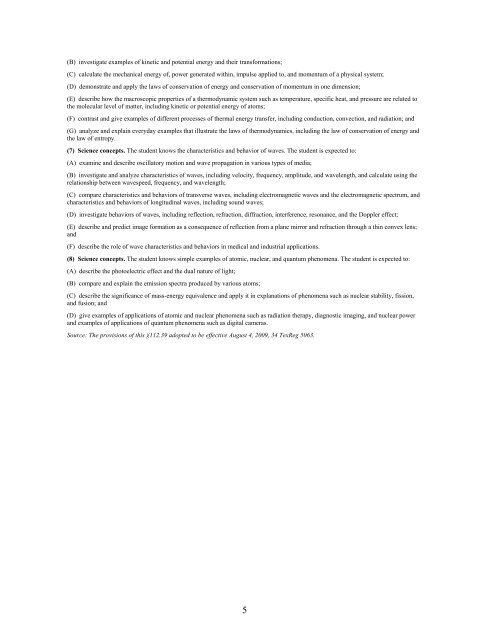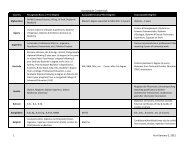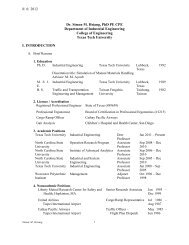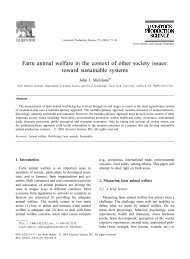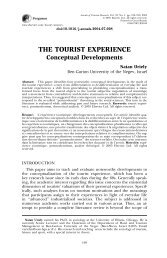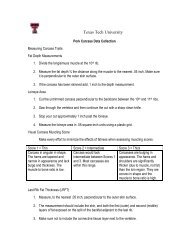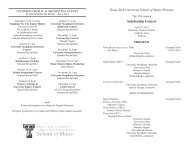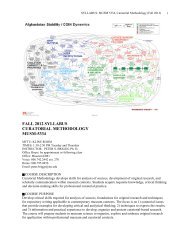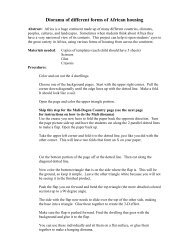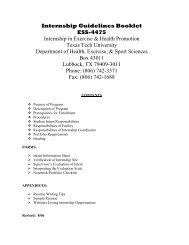PHY 1A - Texas Tech University
PHY 1A - Texas Tech University
PHY 1A - Texas Tech University
You also want an ePaper? Increase the reach of your titles
YUMPU automatically turns print PDFs into web optimized ePapers that Google loves.
(B) investigate examples of kinetic and potential energy and their transformations;<br />
(C) calculate the mechanical energy of, power generated within, impulse applied to, and momentum of a physical system;<br />
(D) demonstrate and apply the laws of conservation of energy and conservation of momentum in one dimension;<br />
(E) describe how the macroscopic properties of a thermodynamic system such as temperature, specific heat, and pressure are related to<br />
the molecular level of matter, including kinetic or potential energy of atoms;<br />
(F) contrast and give examples of different processes of thermal energy transfer, including conduction, convection, and radiation; and<br />
(G) analyze and explain everyday examples that illustrate the laws of thermodynamics, including the law of conservation of energy and<br />
the law of entropy.<br />
(7) Science concepts. The student knows the characteristics and behavior of waves. The student is expected to:<br />
(A) examine and describe oscillatory motion and wave propagation in various types of media;<br />
(B) investigate and analyze characteristics of waves, including velocity, frequency, amplitude, and wavelength, and calculate using the<br />
relationship between wavespeed, frequency, and wavelength;<br />
(C) compare characteristics and behaviors of transverse waves, including electromagnetic waves and the electromagnetic spectrum, and<br />
characteristics and behaviors of longitudinal waves, including sound waves;<br />
(D) investigate behaviors of waves, including reflection, refraction, diffraction, interference, resonance, and the Doppler effect;<br />
(E) describe and predict image formation as a consequence of reflection from a plane mirror and refraction through a thin convex lens;<br />
and<br />
(F) describe the role of wave characteristics and behaviors in medical and industrial applications.<br />
(8) Science concepts. The student knows simple examples of atomic, nuclear, and quantum phenomena. The student is expected to:<br />
(A) describe the photoelectric effect and the dual nature of light;<br />
(B) compare and explain the emission spectra produced by various atoms;<br />
(C) describe the significance of mass-energy equivalence and apply it in explanations of phenomena such as nuclear stability, fission,<br />
and fusion; and<br />
(D) give examples of applications of atomic and nuclear phenomena such as radiation therapy, diagnostic imaging, and nuclear power<br />
and examples of applications of quantum phenomena such as digital cameras.<br />
Source: The provisions of this §112.39 adopted to be effective August 4, 2009, 34 TexReg 5063.<br />
5


